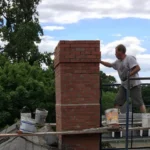A mobile tower scaffold is a common sight on construction sites across the United Kingdom. They provide a safe and efficient way for workers to access elevated areas and perform their tasks. However, working at heights can be hazardous if proper safety measures are not followed. In this guide, we will explore everything you need to know about scaffold tower safety in the UK, including regulations, equipment requirements, and best practices.
1. Understanding UK Scaffold Tower Regulations
The Health and Safety Executive (HSE) in the UK has laid out specific regulations and guidelines to ensure the safety of workers using scaffold towers. The Work at Height Regulations 2005 outlines the legal requirements for working at heights, including the use of scaffold towers. According to these regulations, employers and workers have a shared responsibility to ensure that scaffold towers are used safely.
2. Choosing the Right Scaffold Tower
Selecting the appropriate scaffold tower for a particular job is crucial for safety. Factors to consider include the height required, the weight capacity needed, and the terrain where the tower will be used. Scaffold towers come in various types, such as single-width, double-width, and narrow-span towers. Each type has different load-bearing capacities and stability features. It is essential to choose a scaffold tower that is suitable for the specific task at hand.
3. Erecting and Dismantling Scaffold Towers
Proper erection and dismantling of scaffold towers are critical to maintaining safety. Only trained and competent personnel should undertake these tasks. The tower should be erected on a level surface, and all components must be securely locked in place. Guardrails, toe boards, and stabilizers should be installed to prevent falls and provide stability. Regular inspections should be carried out before each use to identify any defects or damage.
4. Safe Working Practices
When working on a scaffold tower, it is essential to adhere to safe practices to minimize the risk of accidents. This includes wearing appropriate personal protective equipment (PPE), such as hard hats, high-visibility clothing, and non-slip footwear. Workers should also receive proper training on how to use the scaffold tower, including how to climb and descend safely, how to handle tools, and how to avoid overloading the platform.
5. Preventing Falls from Scaffold Towers
Falls from height are one of the most common accidents in the construction industry. To prevent falls from scaffold towers, guardrails should be installed on all open sides of the platform. Toe boards should be used to prevent objects from falling off the tower and endangering workers below. Additionally, workers should never stand on the guardrails or use makeshift platforms or ladders to increase their height.
6. Regular Inspections and Maintenance
Regular inspections and maintenance are crucial for ensuring the ongoing safety of scaffold towers. Inspections should be carried out by a competent person before each use and at regular intervals during prolonged use. Any defects or damage should be promptly addressed, and damaged components should be replaced. The manufacturer’s instructions should be followed regarding maintenance and repairs.
7. Training and Competence
Proper training is vital for anyone working on or around scaffold towers. Employers should provide comprehensive training to their workers on scaffold tower safety, including how to erect, use, and dismantle the towers correctly. Competence should be assessed, and refresher training should be provided regularly. Workers should also be aware of emergency procedures and know how to respond in case of an incident.
8. External Factors and Weather Conditions
External factors, such as strong winds, rain, or extreme temperatures, can affect the stability and safety of scaffold towers. It is crucial to monitor weather conditions and suspend work if conditions pose a risk. Scaffold towers should not be used in adverse weather conditions unless specifically designed and approved for such conditions. Workers should also be cautious of the ground conditions where the scaffold tower is erected. Uneven or unstable ground can compromise the stability of the tower, increasing the risk of accidents. It is important to assess the ground and make necessary adjustments or use additional stabilizers to ensure the tower’s stability.
9. Communication and Collaboration
Effective communication and collaboration among workers are essential for scaffold tower safety. Clear instructions should be provided to workers regarding the tasks to be performed, safety procedures, and any specific hazards associated with the job. Workers should also be encouraged to report any safety concerns or near-miss incidents to their supervisors. Collaboration ensures that everyone is working together to maintain a safe working environment.
10. Emergency Preparedness
Despite taking all necessary precautions, accidents can still happen. It is crucial to have proper emergency procedures in place. Workers should be familiar with emergency evacuation routes, the location of first aid kits, and how to respond in case of an incident or injury. Regular drills and training sessions should be conducted to ensure that workers are prepared to handle emergencies effectively.
Conclusion
Scaffold tower safety is of paramount importance in the construction industry. By understanding and complying with UK regulations, selecting the appropriate scaffold tower, following safe working practices, and conducting regular inspections and maintenance, workers can significantly reduce the risk of accidents and injuries. Proper training, effective communication, and preparedness for emergencies are also critical aspects of ensuring a safe working environment. By prioritizing scaffold tower safety, employers and workers can create a culture of safety and promote the well-being of everyone involved in construction projects across the UK.
Read Also: Top 4 Essential Duties Of A Construction Safety Officer
Next Article: TOP WEATHERBOARD CLADDING TRENDS FOR 2023 AND BEYOND







